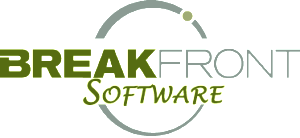
It’s called vaporware, and it’s one of the oldest tricks in the book.
And So It Starts
Microsoft was one of the pioneers of announcing vaporware in its day back when it announced Windows in 1985. It was so bad that it was called an epidemic by 1989. Since I was just entering college at this time, I lived through the vaporware years and they were pretty annoying. A product would be announced, it would sound really cool and then we would have to wait months or even years (i.e. IBM’s system/360, 3 year wait) before seeing anything, if ever.
Most of that silliness stopped in the years following as companies realized that announcing vaporware actually did more harm than good – not to mention the embarrassment.
That was, until, about twenty years later (right about now) when apparently the trend is just now hitting our silly industry. It’s sad but true, the kitchen and bath industry once again lives up to its promise of being behind the times in the one category we wish so strongly to change: software.
Below are the top reasons why betting on vaporware for your operation is a losing proposition. And for all you goof-balls out there announcing software products before they’re actually ready, shame on you: dealers deserve better.
- Vaporware is not an actual software product yet. Announcing a product before it can actually be bought is simply a marketing ploy. It’s designed to keep you waiting in the hopes you’ll wait. What is most likely happening behind the scenes is project delays, cost overruns, & other problems that have put a serious kink in the project’s timelines. Get ready for one heck of a bumpy ride as the product makes it into the public domain (if it ever makes it all).
- New is only for the incredibly brave. New products are, well, new. And that means that vaporware isn’t even battle tested yet. If you’re the type of business that enjoys being first, experiencing weird bugs, missing critical features and interruptions to your business: have fun! Vaporware needs a few good businesses willing to sacrifice their time and money early on to make products actually work in the long run (and you should expect a serious discount for that endeavor – if not free altogether).
- It’s not just the software. Sure the software may sound cool (or not), but vaporware needs to have support staff, customer success stories and a proven track record of improving your business. Building vaporware in a lab is the fun part that everyone loves to talk about – converting into the real deal takes years, capital and employees that live and breathe this industry.
- How much is it, really? Because vaporware isn’t actually finished yet, it’s hard to determine the end price. For example, if the product makes it to the public domain and the vendor finds out a few hundred thousand more dollars are needed for a few key features, that means the initial price of the software and the final price of the software could be two different numbers. That means you could be stuck paying a lot more than a later buyer of the software. Be sure to mix that into any negotiations you may have once the product hits the market.
- Buying direct or indirect? Be careful who you are buying the vaporware from. Vaporware creators often avoid the hard part of figuring out how to sell what they haven’t even finished building yet. So, they rely on a third party to resell or help promote their upcoming software product. If another company is involved in helping to sell vaporware, they’ll usually wrap limitations around the vendor’s software (i.e. only works with a particular brand, or if you’re a member of a particular group, etc.) and other exclusivity tricks. That means if you make change to your business, you could be left with a messy situation.
- Vaporware still needs industry expertise. It’s not enough to know people in this industry or for generic software providers to team up with industry partners. The software creator itself must have industry veterans on staff from every possible angle of running a successful operation. And yes that means programmers who get training inside real kitchen and bath businesses. If not, it doesn’t really matter if the vaporware is ever finished or not – the percentage chance of the software providing real value to your business is an absolute zero.
Prove It
Vaporware sometimes hit the shelves, sometimes not. Either way, in 2012 it’s best to stick with proven software solutions for your business. Vaporware usually disappears quickly, is never heard form again, or in rare cases actually settles down into a valid solution over the next few years.
If your heart is set on vaporware from your favorite vendor, it’s best to wait at least a year or two after it first launches while the vaporware settles down and the battle-testing period is over. After that you can check around with fellow dealers and find out for yourself if the solution is worth pursuing.
Until then, make your hopes like the vaporware itself: nonexistent.

